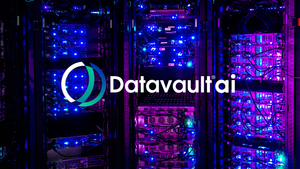
Wall Street has been grappling with significant volatility and sharp stock declines in late 2025, as a confluence of resilient economic data, persistent inflation, and growing skepticism around Artificial Intelligence (AI) valuations has eroded investor confidence. The market's initial hopes for imminent interest rate cuts have been severely dashed by a hawkish Federal Reserve stance and a surprisingly robust, albeit mixed, labor market, leading to widespread "rate-cut doubts." Simultaneously, concerns about the sustainability of soaring AI sector valuations, dubbed "AI jitters," have prompted a re-evaluation of growth stocks, contributing to the broader market sell-off.
This challenging environment has seen major U.S. equity indexes, including the S&P 500, Nasdaq Composite, and Dow Jones Industrial Average, experience jarring swings and substantial percentage-point losses. The Federal Reserve's cautious approach, highlighted by statements from Chair Jerome Powell, suggests a "higher for longer" interest rate scenario, which is tightening financial conditions and making speculative investments less attractive. Investors are now navigating a landscape where the promise of AI innovation is weighed against its immediate profitability and the broader economic headwinds.
Economic Headwinds and AI Valuation Scrutiny Drive Market Downturn
The recent market turbulence stems from a multifaceted economic picture and an intense scrutiny of the AI sector's rapid ascent. Several key factors have converged to create this environment of uncertainty and decline.
A primary catalyst for the "rate-cut doubts" has been the U.S. labor market's unexpected resilience. Despite signs of cooling throughout 2025, the September 2025 jobs report, released later than usual due to a government shutdown, revealed a gain of 119,000 jobs, significantly surpassing economists' forecasts. While the unemployment rate edged up to 4.4% in September, this was partly attributed to more individuals entering the workforce, rather than a severe weakening of demand. This robust employment picture, coupled with inflation stubbornly hovering around 3%—above the Federal Reserve's 2% target for nearly five years—has solidified the Fed's hawkish stance. Even after 25-basis-point cuts in September and October, bringing the federal funds rate to 3.75%-4.00%, Fed Chair Jerome Powell's commentary after the October meeting emphasized that a December cut was "far from a foregone conclusion," drastically reducing market expectations for further easing.
Adding to the complexity, a government shutdown prior to late 2025 led to a "data void," with crucial economic reports like the October and November Nonfarm Payrolls (NFP) being delayed or canceled. This lack of comprehensive real-time information forced investors to make decisions with incomplete data, amplifying market volatility. Furthermore, while consumer spending showed strength earlier in 2025, it is projected to weaken through the end of the year and into 2026, with forecasts from Morgan Stanley Research indicating a slowdown in nominal spending growth due to a cooling labor market, tariff-induced inflation, and policy uncertainty. Manufacturing data also reflected this moderation, with the U.S. manufacturing PMI barely staying above the contraction line in November 2025.
Simultaneously, "AI jitters" have grown concerning the sustainability of the sector's sky-high valuations. AI-related enterprises accounted for roughly 80% of American stock market gains in 2025, with companies like Nvidia (NASDAQ: NVDA) reaching over $5 trillion in value by October. This rapid appreciation has sparked warnings of an "AI bubble," drawing comparisons to the dot-com bust of 2000. Investors are increasingly questioning the unproven profitability of many AI companies and the immense capital required for AI infrastructure. For instance, Microsoft (NASDAQ: MSFT) disclosed spending nearly $35 billion on AI infrastructure in the three months leading up to September 2025, leading to a drop in its share value despite revenue increases, as investors worried about the costs of sustaining the AI boom. An August 2025 MIT report highlighted that "despite US$30–40bn in enterprise investment into Gen[erative]AI, [...] 95% of organisations are getting zero return." The elevated interest rate environment further exacerbates these concerns, making speculative valuations less appealing and shifting focus towards companies with clear revenue models and demonstrable returns.
The immediate market reaction has been one of heightened caution and significant sell-offs. On specific occasions in November, the Dow Jones Industrial Average (DJIA) dropped nearly 800 points, illustrating the fragile investor confidence. While Nvidia's strong Q3 2025 earnings report on November 20th temporarily eased some "AI bubble" fears and led to a rally in AI-linked stocks, the broader sentiment remains one of scrutiny regarding long-term profitability and the overall market's reliance on a few large tech players. Investors are recalibrating their portfolios, moving away from high price-to-earnings growth stocks towards more value-oriented companies with proven profitability.
Companies Navigating a Shifting Landscape
The current economic climate, characterized by persistent rate-cut doubts and increasing "AI jitters," is creating a clear divide between potential winners and losers in the market. Companies with strong balance sheets, proven profitability, and diversified revenue streams are better positioned to weather the storm, while highly speculative growth companies, particularly those in the AI sector with unproven business models, face significant headwinds.
Potential Losers:
- High-Growth, Unprofitable AI Startups: Many AI companies that have seen their valuations soar based on future potential rather than current earnings are particularly vulnerable. As interest rates remain elevated, the cost of capital increases, making it harder for these companies to secure funding and justify their high valuations. The MIT report in August 2025, indicating that 95% of organizations investing in Generative AI are seeing zero return, underscores this challenge. Companies that require massive upfront investment in R&D and infrastructure without a clear path to profitability will likely struggle to maintain investor confidence.
- Highly Leveraged Companies: Firms with substantial debt burdens will face increased financing costs in a "higher for longer" interest rate environment. This will eat into their profit margins and could hinder expansion plans or even lead to financial distress.
- Discretionary Consumer Goods and Services: With consumer spending expected to weaken in late 2025 and early 2026 due to inflation and policy uncertainty, companies reliant on discretionary consumer purchases may see reduced demand. This could impact retailers, travel companies, and luxury brands.
- Semiconductor Manufacturers (with caveats): While companies like Nvidia (NASDAQ: NVDA) have been at the forefront of the AI boom, their valuations are under intense scrutiny. Although Nvidia's strong Q3 2025 earnings provided a temporary boost, sustained "AI jitters" and concerns about the long-term profitability of AI infrastructure spending could lead to further corrections. Companies heavily reliant on a single, high-growth sector are inherently more exposed to sector-specific downturns.
Potential Winners (or those better positioned):
- Established Tech Giants with Diversified AI Applications: Companies like Microsoft (NASDAQ: MSFT), Alphabet (NASDAQ: GOOGL), and Amazon (NASDAQ: AMZN) are investing heavily in AI but also possess diversified revenue streams from cloud computing, advertising, and e-commerce. While their AI infrastructure costs are significant, as seen with Microsoft's $35 billion spend, their established profitability and broad customer bases provide a buffer. They are better equipped to absorb the costs of AI development and integrate it into existing profitable services.
- Value Stocks and Dividend Payers: In an environment of uncertainty and higher interest rates, investors tend to flock to companies with stable earnings, strong cash flow, and a history of paying dividends. These "value" companies, often in mature industries, offer a perceived safe haven compared to speculative growth stocks.
- Companies with Strong Free Cash Flow: Firms that generate substantial free cash flow can self-fund their operations and investments, reducing their reliance on external financing and making them more resilient to higher interest rates. This allows them to continue innovating or returning capital to shareholders even when borrowing costs are high.
- Cybersecurity Firms: As AI adoption grows, so does the complexity and scale of cyber threats. Companies specializing in cybersecurity, such as Palo Alto Networks (NASDAQ: PANW) or CrowdStrike (NASDAQ: CRWD), may see increased demand for their services as businesses invest more in protecting their AI infrastructure and data.
- Utilities and Essential Services: These sectors often exhibit stable demand regardless of economic cycles, making them attractive during periods of uncertainty. Their predictable revenue streams and often regulated nature provide stability.
The shift in market sentiment underscores a move away from pure growth narratives towards a greater emphasis on fundamental financial health and demonstrable returns on investment, forcing companies across the spectrum to re-evaluate their strategies and spending in this evolving economic landscape.
Broader Implications and Historical Parallels
The current confluence of "AI jitters" and "rate-cut doubts" on Wall Street signifies a broader recalibration within the financial markets, with potential ripple effects across various industries and policy considerations. This period is not merely a transient blip but rather fits into larger economic and technological trends, echoing historical precedents that offer valuable lessons.
Firstly, the "higher for longer" interest rate environment is a significant macroeconomic trend. The Federal Reserve's persistent battle against inflation, which has remained sticky above its 2% target for an extended period, means borrowing costs are likely to remain elevated well into 2026. This has profound implications for corporate financing, consumer spending, and investment decisions. For companies, higher interest rates increase the cost of debt, potentially slowing down capital expenditures and mergers & acquisitions. For consumers, it translates to higher mortgage rates, car loans, and credit card interest, dampening discretionary spending and potentially impacting sectors like housing and retail. This environment also challenges the valuation models of growth stocks, as future earnings are discounted more heavily, making current high valuations harder to justify.
The scrutiny of AI valuations is a crucial industry trend. While AI undeniably represents a transformative technological wave, the market's initial exuberance has led to a concentration of gains in a few mega-cap tech companies, raising concerns about market breadth and potential overvaluation. This resembles the dot-com bubble of the late 1990s, where internet companies with little to no revenue commanded astronomical valuations based on future potential. The current "AI jitters" suggest a similar period of investor skepticism emerging, demanding clearer paths to profitability and tangible returns on AI investments. Regulatory bodies are also beginning to pay closer attention to the concentration of power and potential anti-competitive practices within the AI sector, as well as the ethical implications of AI development. This could lead to increased regulatory oversight, impacting business models and innovation trajectories for major players like Microsoft (NASDAQ: MSFT), Google (NASDAQ: GOOGL), and Amazon (NASDAQ: AMZN), who are at the forefront of AI development.
Ripple effects are already being felt beyond the immediate tech sector. Companies that heavily invested in AI solutions hoping for immediate productivity gains are now facing pressure to demonstrate ROI, potentially leading to more cautious AI adoption strategies. Partners and suppliers to the AI industry, such as data center providers or specialized hardware manufacturers, may see fluctuating demand if the pace of AI infrastructure build-out slows or becomes more selective. The labor market, too, faces potential disruption. While AI promises long-term productivity, short-term anxieties about job displacement, as evidenced by reports of increased job cuts partly attributed to AI-enabled cost-cutting, could influence policy debates around retraining and social safety nets.
Historically, periods of rapid technological advancement followed by market corrections are not uncommon. The dot-com bust of 2000-2001 serves as a stark reminder. Many internet companies with promising technologies but unproven business models saw their stock prices collapse. However, the underlying technology (the internet) continued to evolve and eventually became indispensable. Similarly, while the AI sector might undergo a correction, the fundamental importance and long-term potential of AI are unlikely to diminish. The key takeaway from historical precedents is that while the technology is transformative, market valuations often get ahead of themselves, requiring a period of consolidation and a shift towards sustainable business models. The current environment also bears similarities to periods of stagflation fears in the 1970s and early 1980s, where persistent inflation combined with slowing economic growth challenged traditional monetary policy responses. The Fed's current balancing act between taming inflation and avoiding a severe recession is a delicate one, with global implications for capital flows and currency markets.
The ongoing market re-evaluation underscores a broader shift towards fundamentals, forcing companies and investors alike to adapt to a more discerning and less forgiving financial landscape.
Navigating the Path Forward: Short-Term Volatility and Long-Term Adaptation
The immediate future for Wall Street is likely to be characterized by continued volatility as markets digest the implications of persistent "rate-cut doubts" and the ongoing re-evaluation of AI sector valuations. However, this period of uncertainty also presents both challenges and opportunities that will shape the strategic pivots and adaptations required from companies and investors alike.
In the short-term, investors should anticipate further market swings. The Federal Reserve's data-dependent approach means that upcoming economic reports, particularly those related to inflation and employment, will be closely scrutinized for any signals regarding future monetary policy. Any unexpected resilience in economic data could further cement the "higher for longer" interest rate narrative, potentially triggering more sell-offs, especially in growth-oriented sectors. Conversely, clear signs of economic softening, without a resurgence of inflation, might reignite hopes for eventual rate cuts, providing temporary relief to the market. Companies, particularly those with significant debt or reliance on external financing, will need to prioritize cash flow management and balance sheet strength to navigate this high-interest-rate environment. The AI sector will likely see a continued bifurcation, with a greater emphasis on companies demonstrating clear, profitable use cases for their AI technologies rather than speculative potential.
Long-term possibilities suggest a more mature and discerning market for AI. The "AI jitters" are not likely to derail the technological advancement of AI, but rather force a more disciplined approach to investment and development. Companies that successfully integrate AI to enhance existing products, create tangible cost efficiencies, or unlock new, profitable revenue streams will ultimately thrive. This may lead to a consolidation within the AI industry, where well-capitalized tech giants acquire promising startups with proven technologies, or where smaller players with unsustainable models falter. The focus will shift from "AI for AI's sake" to "AI for business value." Furthermore, the regulatory landscape for AI is expected to evolve, with potential new policies impacting data privacy, ethical AI development, and market concentration, which could influence the long-term competitive dynamics of the sector.
Strategic pivots for companies will involve a renewed focus on profitability and efficiency. Businesses that benefited from cheap capital and high growth valuations will need to demonstrate stronger fundamentals. This could include streamlining operations, divesting non-core assets, or delaying ambitious expansion plans until economic conditions stabilize. For AI companies, the adaptation will involve a clearer articulation of their value proposition, moving beyond hype to showcase tangible ROI for their clients or users. Diversification of revenue streams and customer bases will also be crucial to mitigate risks associated with sector-specific downturns.
Market opportunities may emerge for value investors seeking fundamentally sound companies that have been unfairly penalized during the broader market sell-off. Sectors traditionally seen as defensive, such as utilities, healthcare, and consumer staples, might attract increased investment due to their stable earnings and dividend yields. Furthermore, companies that provide essential infrastructure for AI, but with less speculative valuations, such as certain hardware manufacturers or specialized data service providers, could present compelling opportunities. The "higher for longer" rate environment also favors financial institutions that can benefit from wider interest rate margins.
In essence, the coming months will test the resilience of both companies and investors. Those who adapt to the new economic realities, prioritize sustainable growth over speculative expansion, and maintain a long-term perspective will be best positioned to navigate the challenges and capitalize on the opportunities that emerge from this period of market re-calibration.
A New Market Paradigm: Prudence and Profitability Reign
The recent turbulence on Wall Street, driven by persistent "rate-cut doubts" and escalating "AI jitters," marks a significant turning point in the financial markets. It underscores a fundamental shift away from the era of abundant cheap capital and unchecked growth narratives towards a new paradigm where prudence, profitability, and demonstrable value are paramount. This period of re-calibration is not merely a temporary setback but rather a foundational adjustment that will have lasting implications for investors, public companies, and the broader economy.
The key takeaway from this event is the Federal Reserve's unwavering commitment to combating inflation, even at the expense of potential economic slowdown and sustained higher interest rates. The market's initial optimism for imminent rate cuts has been replaced by a sober recognition of a "higher for longer" interest rate environment, which fundamentally alters investment calculus. This has exposed vulnerabilities in highly leveraged companies and those with speculative valuations, particularly within the AI sector, where the promise of future innovation had often outpaced immediate profitability. The "AI jitters" highlight the market's growing demand for tangible returns and sustainable business models, rather than relying solely on growth potential.
Moving forward, the market will likely remain discerning. Investors should anticipate continued volatility as economic data unfolds and the Federal Reserve navigates its challenging dual mandate. The focus will increasingly shift from top-line growth to bottom-line profitability, free cash flow generation, and strong balance sheets. Companies that can demonstrate efficient capital allocation, disciplined spending, and a clear path to generating shareholder value will be rewarded. Conversely, those reliant on aggressive growth strategies funded by cheap debt or continuous equity raises will face significant pressure.
For investors, the coming months will necessitate a strategic re-evaluation of portfolios. Diversification across sectors, a focus on quality companies with proven earnings, and an increased allocation to value-oriented assets may prove beneficial. The era of blindly chasing high-growth tech stocks without scrutinizing fundamentals appears to be waning. While AI remains a transformative technology with immense long-term potential, the market is demanding a more realistic assessment of its immediate economic impact and profitability. This period serves as a crucial reminder that market corrections, while painful, are often necessary to clear speculative excesses and lay the groundwork for more sustainable, fundamentally sound growth in the future. What investors should watch for in the coming months are the Federal Reserve's communications, inflation trends, labor market reports, and crucially, the earnings reports of major AI players for clearer signs of profitability and return on investment. The market is entering a new chapter, one that demands a more grounded and financially disciplined approach.
This content is intended for informational purposes only and is not financial advice






